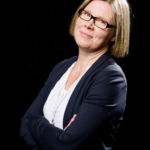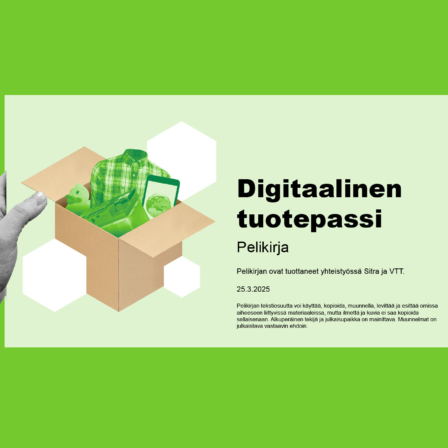There are major expectations for the role digital services will play in solving the sustainability crisis, and while the use of electronic devices and digital services continues to grow, there is only limited information available about the environmental impacts of these solutions.
“Digital services are not intangible. Videos, for example, are watched on phones or televisions that require metals and other raw materials to be built,” explains Lotta Toivonen, circular economy specialist at Sitra. “Both the manufacture and use of devices consume energy, and generating that requires raw materials.”
A research project launched and funded by Sitra reviewed the value chain of the minerals and metals required for smartphones and smart TVs, from their excavation to recycling. The study “Digitalisation and natural resources” was carried out by the Geological Survey of Finland (GTK), VTT Technical Research Centre of Finland and the Finnish Environment Institute.
Assessing the challenges for the ICT sector, the study identified, among other things, an increased need for virgin materials caused by increased consumption and the short service lives of devices, the difficulties associated with recovering the raw materials from the devices and the low number of devices recycled.
At the same time, it identified a number of important potential solutions, including designing materials and products according to circular economy The circular economy An economic model which does not focus on producing more and more goods, but in which consumption is based on using services – sharing, renting and recycling – instead of owning. Materials are not destroyed in the end, but are used to make new products over and over again. Open term page The circular economy principles, new models for sharing and owning, and the improvement of recycling processes.
Product design plays a key role in the transition to the circular economy
It is particularly important to recover critical metals that are only present in small amounts in individual smartphones or smart TVs. Although the majority of the critical metals contained in the devices can be recycled, there is currently no economically feasible industrial process for their recovery.
From an individual point of view, returning the devices to a collection point is a good start, but even that does not guarantee that the valuable materials can be recycled. And where they can, even an effective recycling system could not provide enough recycled materials to cover the increasing demand for electronics.
“The same critical raw materials required for the green energy transition are also needed for digital devices,” says Toivonen. “The metals used in smartphones and TVs are used in solar panels, wind power plants and electric vehicle batteries, for example.”
In terms of the ability to recycle materials, the most important decisions need to be made very early in the life cycle of devices. According to an estimate by the European Commission, up to 80 per cent of the environmental impacts caused by a product’s total life cycle are determined in the product and material design phases. And in order for products to be made more sustainable, changes must be made throughout the entire global value chain.
“New operating methods and technological solutions are needed in all phases of the value chain, from mining to material development, product design, component manufacture, product sales and ultimately the development of the recovery system and recycling technologies,” says Nani Pajunen, Leading Specialist in sustainability solutions at Sitra.
How many devices does the world need?
According to the study, the average European household has 72 electric and electronic devices, of which 11 are broken or otherwise not in use. Even if the devices can be recycled, not all of the valuable metals contained by them can be recovered.
“Circular economy principles must be adopted in the design and manufacture of electronic equipment,” says Pajunen. “That means devices that are easy to repair, service and recycle at the end of the life cycle on the one hand, and new business models based on sharing and renting, requiring fewer new devices, on the other. Everyone could also consider how many devices they really need in their home and life.”
One of the problems, the short life cycle of devices, might be improved in the near future. The purpose of the EU’s sustainable products initiative, expected to be published in the first quarter of 2022, is to make the value chains of different product categories, such as electronic devices, sustainable by defining sustainability principles for products. The sustainability principles would prolong the service lives of products by requiring products to be repairable, updateable and recyclable.
You can read the new study “Digitalisation and natural resources” on the Geological Survey of Finland GTK website.




















Recommended
Have some more.